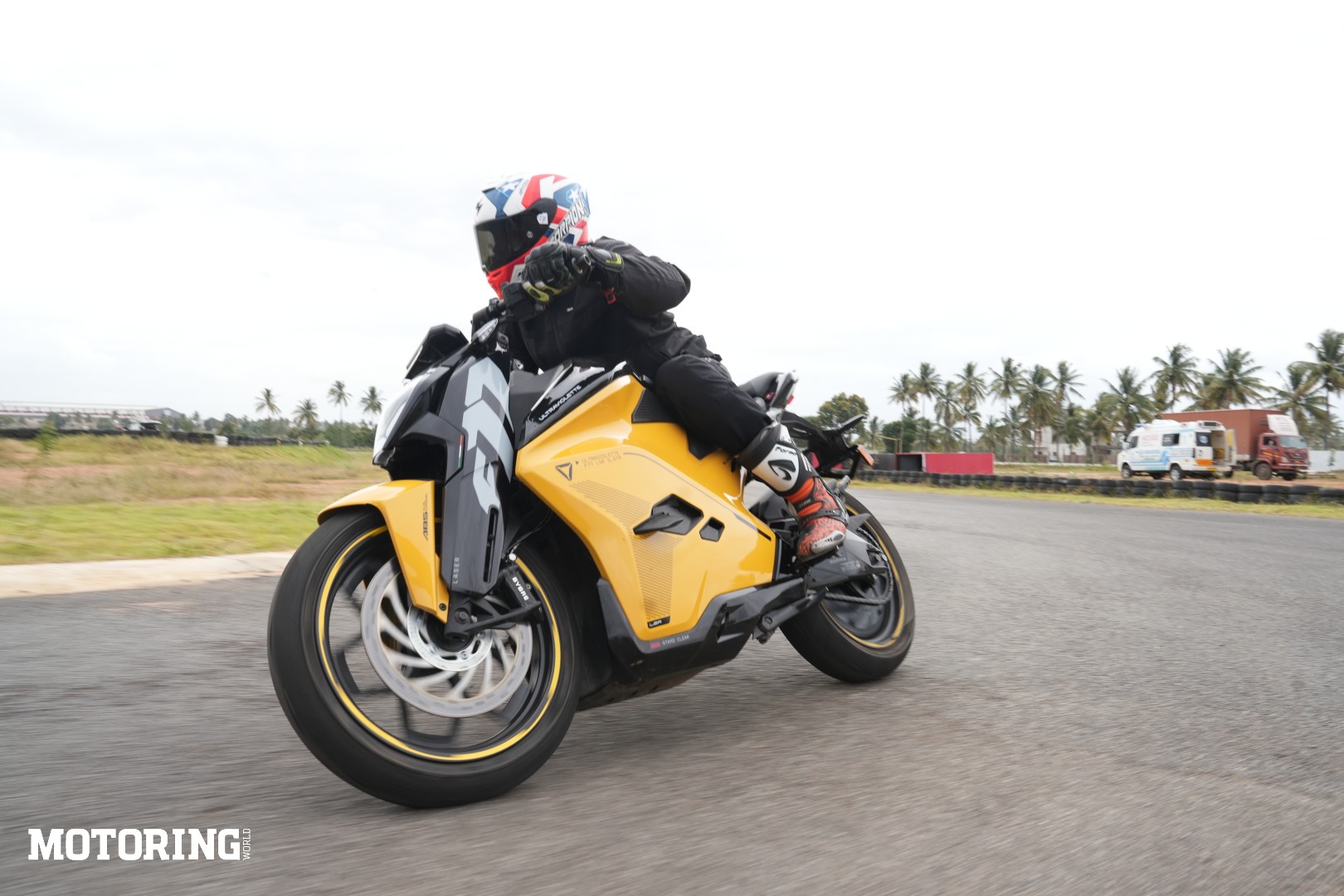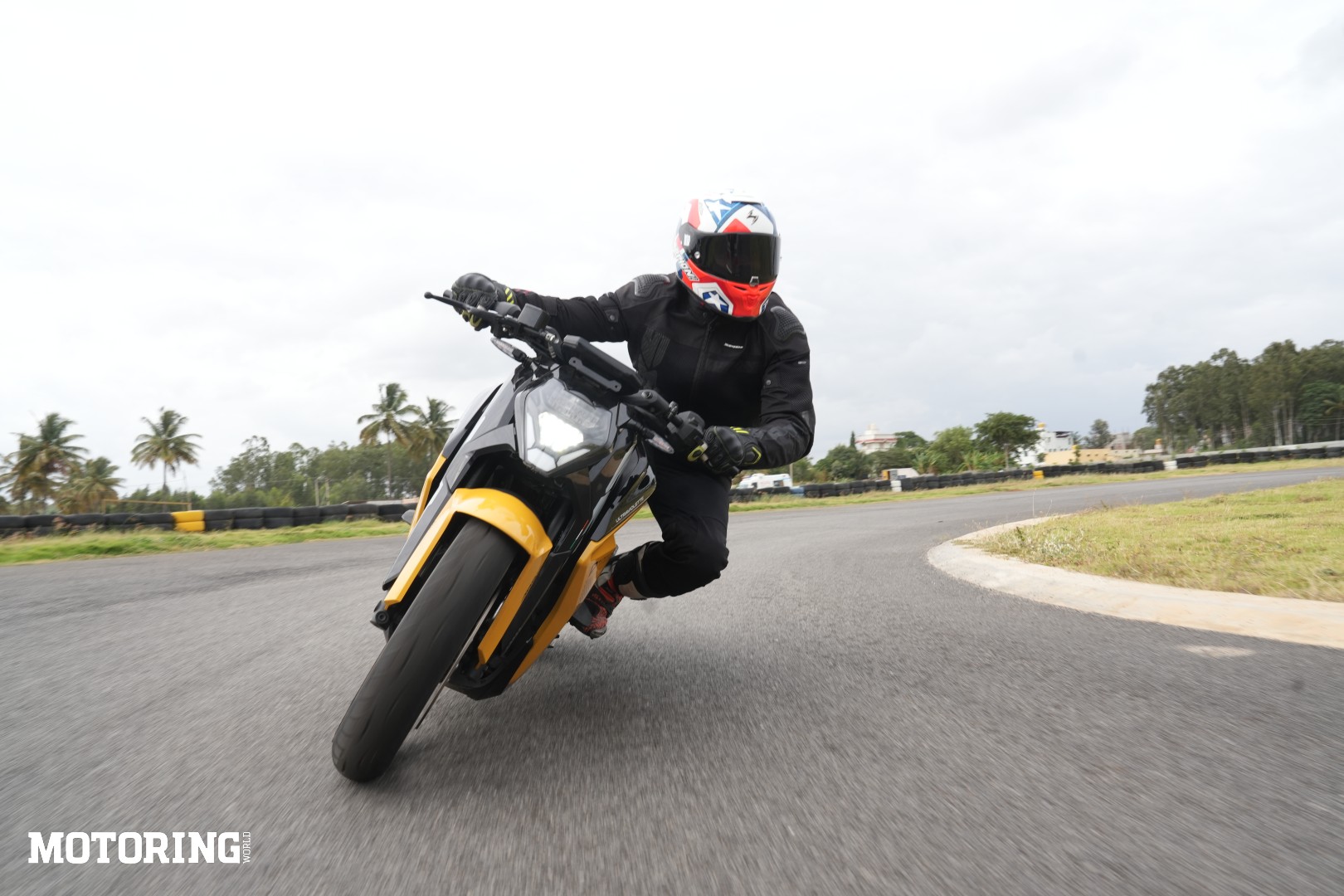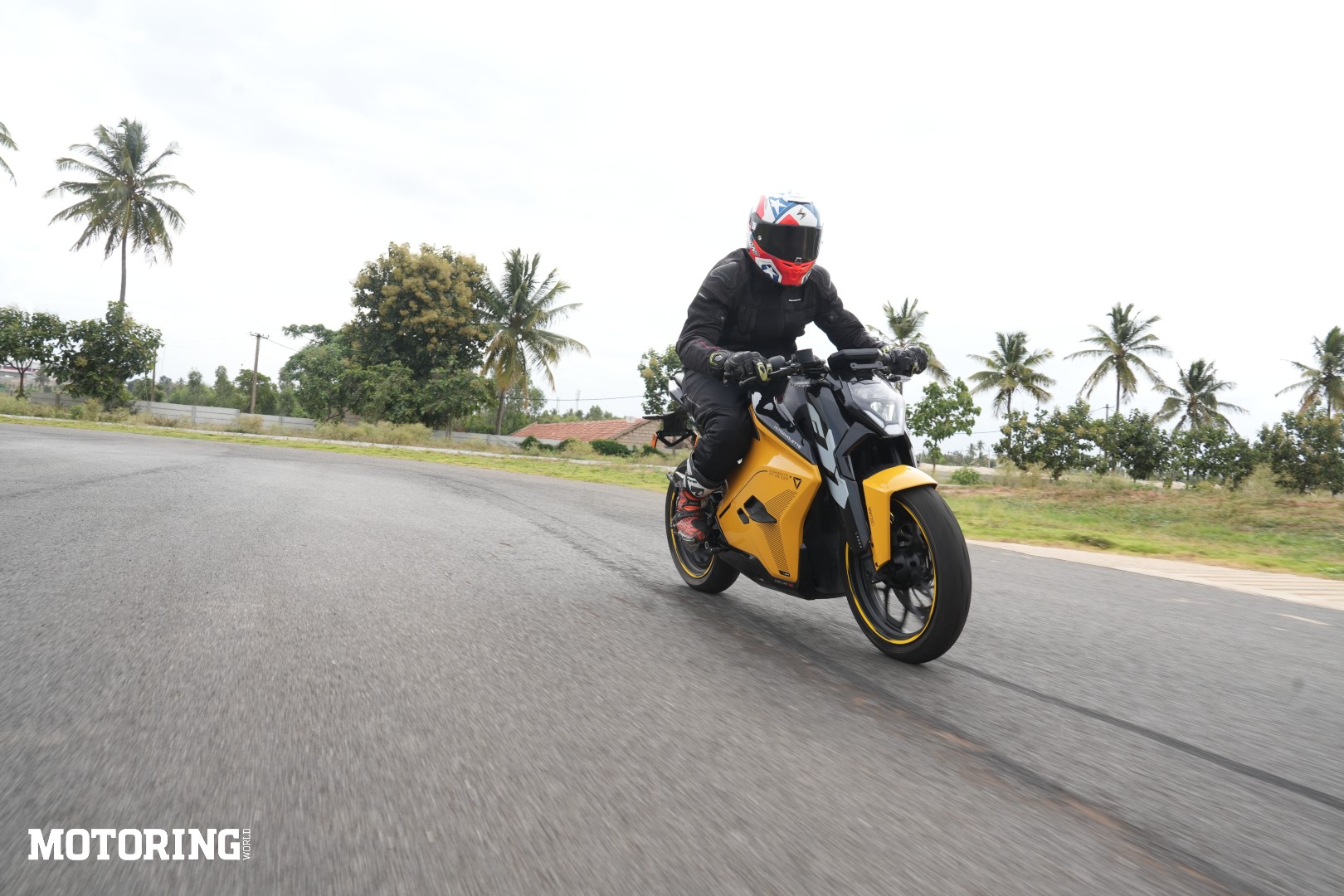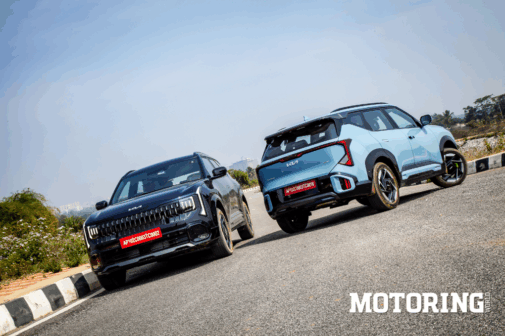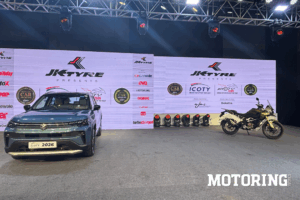The moment I flicked the bike into the third corner, something felt different.
Not the usual kind of different — no fresh tyres, no new brakes, and not even a revised chassis. It was still the same hard-edged Ultraviolette F77: sharp, sci-fi in silhouette, and firm enough to remind you this isn’t a commuter in disguise. But there was something happening between 20 and 70 kph that hadn’t been there before. Something that made the bike lean in, push out, and stand up quicker than it did before. And yes, I rode them back-to-back to confirm this.
I was riding the updated F77 Gen 3 at a go-kart circuit, the kind of place that exposes every flaw and flat spot in a motorcycle’s delivery. It’s also where mid-corner throttle control makes or breaks lap times. And here, the change was obvious.
Ballistic+ is what they’re calling it, replacing the Ballistic mode. The new mode, slipped quietly into the software suite. No bump in claimed figures. No new hardware. Just a fresh map in the bike’s brain that wakes up the mid-range in a way that matters most on a small, twisty track.
From the saddle, it doesn’t feel like a tweak. It feels like intent. The previous F77 was already decently quick, but not off the line. And the new mode doesn’t change that, either. Instead, it now carries more speed through the same set of corners and is faster shooting out of them, too.
I rode session after session, chasing tenths I probably wasn’t skilled enough to find. But the consistency was unmistakable. The F77 was reading inputs faster. Delivering power more precisely. It was, in every way that matters to a rider, a better machine — without a single mechanical change.
That’s the strange magic of electric motorcycles. You don’t need to touch a spanner to change character. No new exhausts, no re-gearing. Just a software update, and suddenly the bike behaves differently. Better.
It’s tempting to call it digital witchcraft, but really, it’s engineering evolution. All the data that Ultraviolette collected from its motorcycles in Europe led the company to make the Ballistic mode go even more ballistic.
Outside of this new mode, the F77 Gen 3 is what it always was — firm, sharp, and serious. The brakes are strong, the weight low-slung, and the looks still cause people to pause. It remains one of the few Indian-built motorcycles that feels like it was designed with a scalpel instead of a spreadsheet. But today, on a sunny go-kart track, the real highlight wasn’t the speed itself. It was the way it arrived. Controlled, compact, predictable — and yet quicker than before. That’s the thing. Isn’t it funny how the fastest part of the bike isn’t the motor anymore. It’s the mind behind it. And all it took was a little code. A code that will soon run not just on new bikes but even the very first F77s… because now, a ‘new’ bike is just a download away.





